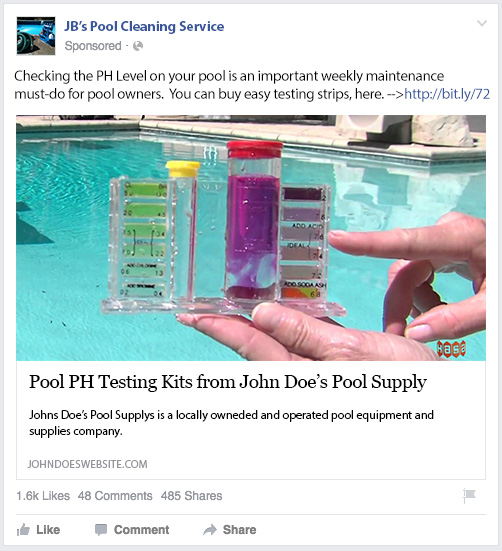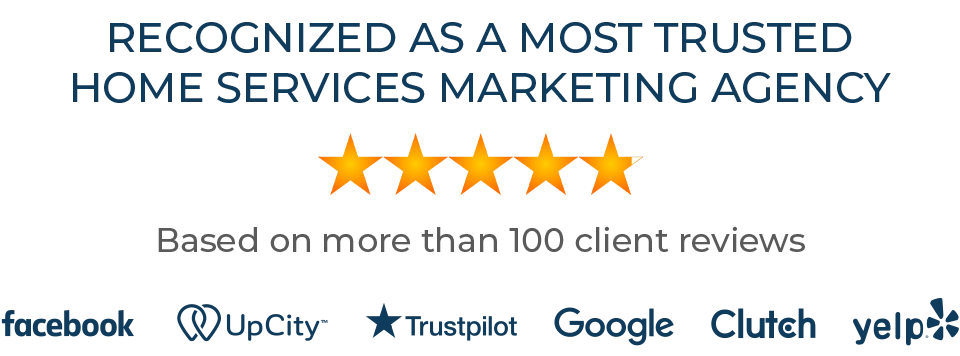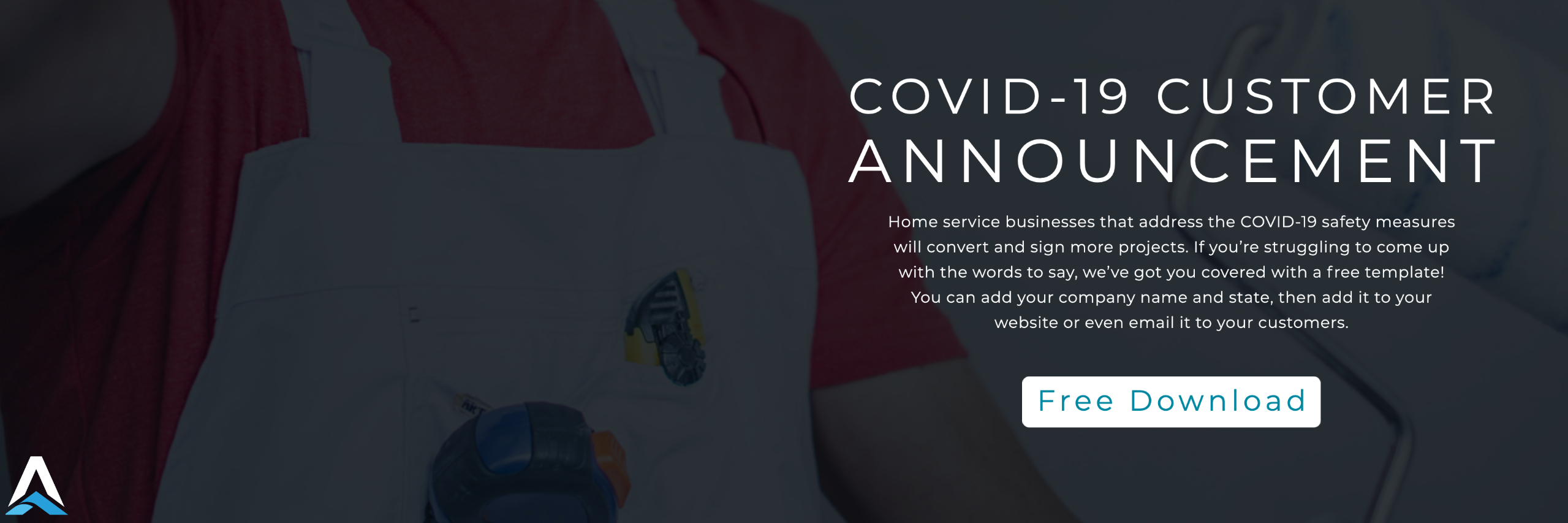Marketing on the interweb is important for all businesses, across all industries.
Today, service based industries see a higher reach to their local areas using smarter digital marketing tactics, and tracking their results to fine tune their efforts and investment.
For pool service companies that are looking for digital marketing strategies to increase their client base, reach more consumers, and ensure they stay ahead of their competitors, let’s discuss the top ten strategies that pool industry companies can compete online.
Responsive website
We have to start here. The fact is that the world has gone mobile, and you know this already. Heck, you’re likely reading this on some type of hand held device.
Because of this fact, you have to be able to engage visitors where they are already spending their time, and better yet, you need to provide them with a valuable and easy experience when they arrive at your website.
Consider this: 87% of smartphone users are turning to search on their phone first when looking for a product or service from a local provider.
Once you capture a users attention, you have to be able to convert that user, and engage with that user.
A responsive website design is a huge part of this, and and a crucial first step for you to take, if you haven’t already. This type of design will adjust based on the screen size of the device that a visitor is using.
If you’re unsure if your website is currently mobile responsive, use Google’s free tool, here.
Facebook Targeting
Not only can you use Facebook targeting to reach potential new accounts, you can also use it to connect with statewide partnerships. Target home builders or realtors with your services, so when they are with their clients you will be the first company that they recommend.
Here’s a quick video on how to setup Facebook targeting to a specific profession:
Text/Mobile Business Card
Increasing your client referrals is both online and offline. Creating a page on your website with pertinent contact info, services offered, and a quick logo is super easy, and you can make this easy to share across both email or text messaging.
Use the link to share your contact info with new potential clients, realtors, and others, and encourage them to forward the message to others whom you could provide your great pool cleaning services.
Increase Local WOM
Word of mouth is no longer limited to someone passing names to their next door neighbor. Americans have proven that they trust online reviews as much as they would a personal friend giving them the same recommendation. With that in mind, increasing your online reviews is paramount to you receiving more word of mouth business for your pool service company.
So how can you increase your reviews online, and where?
Google Reviews
Google is undoubtedly the king of the online reviews. When people search for your business, sure they’ll see other outlets like Angies List and Yelp, but they’ll initially (and prominently) see your Google review rating.
Use the tool here to create a custom link that directs users directly to your Google Review page, where they can quickly and easily leave your pool industry business a positive review.
Facebook Reviews
By simply adding ‘reviews’ to the end of the URL, you’ll have a direct link to your Facebook page reviews. So your new link will look like this, but with your page information:
https://www.facebook.com/yourfacebooklink/reviews/
This will open directly into a Review Box for visitors, immediately asking them to leave their review
Angie’s List
Angie’s List is a great place to gain local reviews too, though it’s a little bit more difficult to show them off and gain them (my opinion). But, here’s where you can get a direct link for Angie’s List.
Google Ads
Google’s pay per click system will always produce fruits when setup and managed properly. It allows you to setup the keywords you wish to target, shows you what others are spending on that keyword, and let’s you choose where and when to run your ads. While I recommend leaving this to a professional, or a Google certified company, it can certainly be done yourself.

Setting up your Google Ads account is pretty simple nowadays, so let’s discuss:
To start your campaign, go to https://ads.google.com, find the “Get started now” button, and sign up for an Google Ads account. Once you’re logged in, click the “Create your first campaign” button.
1. Select your campaign type and name.
First, choose the campaign type—for now, we highly recommend the “Search Network only” option, then give your campaign a name. Also remove the tick next to “Include search partners” for now (you can always change this later).
2. Choose the geographic location where you’d like ads to show.
Next, decide how large or small a geographic area you want to target. You can choose whole countries, regions of countries, states or provinces, cities—even U.S. Congressional districts. You can also choose custom-designated geographic areas, such as latitude-longitude coordinates or the radius of a set number of miles or kilometers around a specific address. Click “Let me choose …” and then search for the most appropriate area for you.
3. Choose your “bid strategy,” and set your daily budget.
Change the default “Bid strategy” to “I’ll manually set my bids for clicks.” This gives you more control and will help you learn AdWords at a greater level of understanding. You can always change to one of the many automatic options later.
Your daily budget is the maximum that Google is authorized to charge you per day. Chances are, you’ll hit that maximum most days. Some businesses are also eligible for a Google credit line (monthly invoicing).”
Set your daily budget so that if you screw up big-time, your checking account won’t get emptied out. You can always come back and bump it up, but it’s important to have a safety net.
4. Ignore the “Ad Extensions” section for now.
This is an important part of any campaign, but leave this for now and add these later after you’ve finished all nine steps.
Click “Save and continue.”
5. Create your first ad group, and write your first ad.
More people click on ads when the headline includes the keyword they’re searching on. So use your keywords in your headline when you can. You’re limited to 25 characters here, so for some search terms, you’ll need to use abbreviations or shorter synonyms.
The second and third lines allow for 35 characters of text each. In most markets, you’ll be more successful if you describe a benefit on the second line, followed by a feature or offer on the third line. Later on, you can test which order converts better.
Even though Google places the field for your display URL—the web address people see in your ad—below your main ad copy here, when your ad displays on the search results page, its URL will actually show up right below your headline. The display URL has to be the same domain as your site, though the URL itself doesn’t necessarily have to be the specific landing page that you take people to.
The last line is your actual destination URL, or your specific chosen landing page. You can also use a tracking link here.
6. Insert your keywords into the keyword field in your account.
Paste in your keywords. Start with just one set, and add plus signs (+), brackets (
7. Set your maximum cost-per-click.
Set your maximum price-per-click now (called your “default bid”), but realize this: Every keyword is theoretically a different market, which means that each of your major keywords will need a bid price of its own. Google will let you set individual bids for each keyword later.
If you can only afford $50 per day instead of, say, $170, it’s better to bid on low-cost keywords so that your ad can be seen by as many people as possible.
Due to the limitations of any budget, if you’re going after high-priced keywords, you’ll exhaust your budget quickly and your ads will only be seen part of the day rather than for a full 24 hours.
8. Enter your billing information.
Your ads will start showing as soon as you confirm your payment information. Now you’re set.
Search Engine Optimization

At the end of the day, being on page one of Google or Bing is the best way to reach more of your local community.
There are a number of factors that go into SEO for pool industry companies, but two items are extremely important.
And, if you are a startup or willing to commit the time yourself, you can attempt to work through these yourself.
Content Content Content
Content is king. Google has made it clear that they are promoting websites that provide high quality, informational content to their users. We’all dive deeper into content marketing a little further down in this article.
Directory Listings
Since the inter webs began to form, directory listings have been an intricate part of small business marketing. There are thousands of directory listing websites for small businesses, and you’ll want to be listed on any as possible. It takes time and a little concentration to ensure you are listing your business consistently across all platforms, but it can be done. For a breakdown of some of the most important directory listing websites, click here.
Content Marketing
Content marketing can do wonders for your search rankings, but it also has a ton of other benefits. By writing content that solves a problem or answers a question that your target marketing may be searching for, you’re able to position your business as the brand expert.
Consumer expectations are higher than ever. Consumers expect relevant, useful information and solutions to their searches online.
Did you know that more than 90% of consumers made a purchase after searching or researching from their smartphones or tablets?
[easy-tweet tweet=”90% of consumers made a purchase after researching from their smartphones or tablets” via=”no” usehashtags=”no”]In addition, when combined with offers, downloads, and other incentives, it can allow you to create targeted lists of potential new pool service accounts that you wouldn’t have found without it.
Example: Write an article about the importance of weekly pool service. In this article, elude to a checklist that your visitors can download to help keep their pool service accountable. And, for the download, ask them to provide an email address in exchange for the free gift.
You now have a user that you know is a pool owner, and in your target market. And it opens the door for further engagement through ads, social media, or email marketing follow ups.
Video Marketing / Live Streaming
One of our pool service marketing clients once mentioned to me that his office was literally sunny Florida. Implying that his office was the great outdoors, he described it as almost always a beautiful office setting, so how could he ever complain.
It’s a pretty cool description and outlook, and all the more reason to turn on the camera on your phone or tablet.

Show your fans what your office looks like today, and some of the common things that you encounter on a given day. Show them solutions to things they may be seeing in their own pools, and establish yourself as the local expert on all things pool industry related.
Need some ides to get you started? Here’s a few free topics to get the ball rolling:
- Why should you regularly clean your filter?
- Why is my pool turning green?
- Five Reasons to trust a pool service pro
- Why your pool makes your eyes bloodshot and blurry
In addition to what video marketing can do for your fan base, and for your thought leadership, it also has some amazing benefits for your Google page 1 aspirations. Upload your videos to your YouTube channel and link them back to your website. For more information on how YouTube and video marketing effects your SEO, check out our recent article on the subject, here.
Strategic Partnerships
This probably goes without saying, but it’s a good one for startups. Many pool equipment companies and builders don’t service the pools once they’re installed. Creating strategic partnerships with these companies, and letting them know that you will take care of their clients will bring you a ton of referrals.
Think about it, you literally are serving the same demographic yet, generally aren’t offering competing services. It’s a match made in heaven.
Reach out to these companies by promoting and tagging them in your blog and social media posts. Social media is all about creating relationships and engaging those around you, after all. So make the most of it by using it to connect and engage these companies.
Here’s a perfect example of a post connecting you and John Doe’s Pool Equipment Company:

Email Marketing
Don’t let anyone fool you. Email marketing isn’t dead. Not even close. In today’s busy world, it’s actually an ideal way to reach out to your clients and potential clients wherever they may be in the moment.
Collect email addresses through your contact marketing initiatives, and target subscribers with promotions and announcements.
Reach out to your current clients and ask them for referrals of their nigh rod or family members.
Email marketing has tons of great applications. Segment subscribers based on their needs, like pool owners or spa owners. Then, send them information and tips on their specific need, rather than sending them blanketed generic emails.
Follow up with subscribers who take an action with your email, like opening or clicking through to your website. There’s almost an endless amount of possibilities when it comes to email marketing, and these are just a few.
We’ll look a little bit closer into email marketing in the coming weeks… Hey, we have to leave you with some type of suspense after this read, right?
Conclusion
If you’ve reached the bottom of this and are thinking, “where do I start,” the answer likely lies in your progress on the web. All of these items are important in their own way, so look at your goals, and start implementing these items into your digital strategy as soon as possible.
Now it’s your turn. As a pool service professional, what tactics have you found to help your business reach more people on the web? Let us know in the comments, or tweet to us @aginto!
Marketing on the interweb is important for all businesses, across all industries.
Today, service based industries see a higher reach to their local areas using smarter digital marketing tactics, and tracking their results to fine tune their efforts and investment.
For pool service companies that are looking for digital marketing strategies to increase their client base, reach more consumers, and ensure they stay ahead of their competitors, let’s discuss the top ten strategies that pool industry companies can compete online.
Responsive website
We have to start here. The fact is that the world has gone mobile, and you know this already. Heck, you’re likely reading this on some type of hand held device.
Because of this fact, you have to be able to engage visitors where they are already spending their time, and better yet, you need to provide them with a valuable and easy experience when they arrive at your website.
Consider this: 87% of smartphone users are turning to search on their phone first when looking for a product or service from a local provider.
Once you capture a users attention, you have to be able to convert that user, and engage with that user.
A responsive website design is a huge part of this, and and a crucial first step for you to take, if you haven’t already. This type of design will adjust based on the screen size of the device that a visitor is using.
If you’re unsure if your website is currently mobile responsive, use Google’s free tool, here.
Facebook Targeting
Not only can you use Facebook targeting to reach potential new accounts, you can also use it to connect with statewide partnerships. Target home builders or realtors with your services, so when they are with their clients you will be the first company that they recommend.
Here’s a quick video on how to setup Facebook targeting to a specific profession:
Text/Mobile Business Card
Increasing your client referrals is both online and offline. Creating a page on your website with pertinent contact info, services offered, and a quick logo is super easy, and you can make this easy to share across both email or text messaging.
Use the link to share your contact info with new potential clients, realtors, and others, and encourage them to forward the message to others whom you could provide your great pool cleaning services.
Increase Local WOM
Word of mouth is no longer limited to someone passing names to their next door neighbor. Americans have proven that they trust online reviews as much as they would a personal friend giving them the same recommendation. With that in mind, increasing your online reviews is paramount to you receiving more word of mouth business for your pool service company.
So how can you increase your reviews online, and where?
Google Reviews
Google is undoubtedly the king of the online reviews. When people search for your business, sure they’ll see other outlets like Angies List and Yelp, but they’ll initially (and prominently) see your Google review rating.
Use the tool here to create a custom link that directs users directly to your Google Review page, where they can quickly and easily leave your pool industry business a positive review.
Facebook Reviews
By simply adding ‘reviews’ to the end of the URL, you’ll have a direct link to your Facebook page reviews. So your new link will look like this, but with your page information:
https://www.facebook.com/yourfacebooklink/reviews/
This will open directly into a Review Box for visitors, immediately asking them to leave their review
Angie’s List
Angie’s List is a great place to gain local reviews too, though it’s a little bit more difficult to show them off and gain them (my opinion). But, here’s where you can get a direct link for Angie’s List.
Google Ads
Google’s pay per click system will always produce fruits when setup and managed properly. It allows you to setup the keywords you wish to target, shows you what others are spending on that keyword, and let’s you choose where and when to run your ads. While I recommend leaving this to a professional, or a Google certified company, it can certainly be done yourself.

Setting up your Google Ads account is pretty simple nowadays, so let’s discuss:
To start your campaign, go to https://ads.google.com, find the “Get started now” button, and sign up for an Google Ads account. Once you’re logged in, click the “Create your first campaign” button.
1. Select your campaign type and name.
First, choose the campaign type—for now, we highly recommend the “Search Network only” option, then give your campaign a name. Also remove the tick next to “Include search partners” for now (you can always change this later).
2. Choose the geographic location where you’d like ads to show.
Next, decide how large or small a geographic area you want to target. You can choose whole countries, regions of countries, states or provinces, cities—even U.S. Congressional districts. You can also choose custom-designated geographic areas, such as latitude-longitude coordinates or the radius of a set number of miles or kilometers around a specific address. Click “Let me choose …” and then search for the most appropriate area for you.
3. Choose your “bid strategy,” and set your daily budget.
Change the default “Bid strategy” to “I’ll manually set my bids for clicks.” This gives you more control and will help you learn AdWords at a greater level of understanding. You can always change to one of the many automatic options later.
Your daily budget is the maximum that Google is authorized to charge you per day. Chances are, you’ll hit that maximum most days. Some businesses are also eligible for a Google credit line (monthly invoicing).”
Set your daily budget so that if you screw up big-time, your checking account won’t get emptied out. You can always come back and bump it up, but it’s important to have a safety net.
4. Ignore the “Ad Extensions” section for now.
This is an important part of any campaign, but leave this for now and add these later after you’ve finished all nine steps.
Click “Save and continue.”
5. Create your first ad group, and write your first ad.
More people click on ads when the headline includes the keyword they’re searching on. So use your keywords in your headline when you can. You’re limited to 25 characters here, so for some search terms, you’ll need to use abbreviations or shorter synonyms.
The second and third lines allow for 35 characters of text each. In most markets, you’ll be more successful if you describe a benefit on the second line, followed by a feature or offer on the third line. Later on, you can test which order converts better.
Even though Google places the field for your display URL—the web address people see in your ad—below your main ad copy here, when your ad displays on the search results page, its URL will actually show up right below your headline. The display URL has to be the same domain as your site, though the URL itself doesn’t necessarily have to be the specific landing page that you take people to.
The last line is your actual destination URL, or your specific chosen landing page. You can also use a tracking link here.
6. Insert your keywords into the keyword field in your account.
Paste in your keywords. Start with just one set, and add plus signs (+), brackets (
7. Set your maximum cost-per-click.
Set your maximum price-per-click now (called your “default bid”), but realize this: Every keyword is theoretically a different market, which means that each of your major keywords will need a bid price of its own. Google will let you set individual bids for each keyword later.
If you can only afford $50 per day instead of, say, $170, it’s better to bid on low-cost keywords so that your ad can be seen by as many people as possible.
Due to the limitations of any budget, if you’re going after high-priced keywords, you’ll exhaust your budget quickly and your ads will only be seen part of the day rather than for a full 24 hours.
8. Enter your billing information.
Your ads will start showing as soon as you confirm your payment information. Now you’re set.
Search Engine Optimization

At the end of the day, being on page one of Google or Bing is the best way to reach more of your local community.
There are a number of factors that go into SEO for pool industry companies, but two items are extremely important.
And, if you are a startup or willing to commit the time yourself, you can attempt to work through these yourself.
Content Content Content
Content is king. Google has made it clear that they are promoting websites that provide high quality, informational content to their users. We’all dive deeper into content marketing a little further down in this article.
Directory Listings
Since the inter webs began to form, directory listings have been an intricate part of small business marketing. There are thousands of directory listing websites for small businesses, and you’ll want to be listed on any as possible. It takes time and a little concentration to ensure you are listing your business consistently across all platforms, but it can be done. For a breakdown of some of the most important directory listing websites, click here.
Content Marketing
Content marketing can do wonders for your search rankings, but it also has a ton of other benefits. By writing content that solves a problem or answers a question that your target marketing may be searching for, you’re able to position your business as the brand expert.
Consumer expectations are higher than ever. Consumers expect relevant, useful information and solutions to their searches online.
Did you know that more than 90% of consumers made a purchase after searching or researching from their smartphones or tablets?
[easy-tweet tweet=”90% of consumers made a purchase after researching from their smartphones or tablets” via=”no” usehashtags=”no”]In addition, when combined with offers, downloads, and other incentives, it can allow you to create targeted lists of potential new pool service accounts that you wouldn’t have found without it.
Example: Write an article about the importance of weekly pool service. In this article, elude to a checklist that your visitors can download to help keep their pool service accountable. And, for the download, ask them to provide an email address in exchange for the free gift.
You now have a user that you know is a pool owner, and in your target market. And it opens the door for further engagement through ads, social media, or email marketing follow ups.
Video Marketing / Live Streaming
One of our pool service marketing clients once mentioned to me that his office was literally sunny Florida. Implying that his office was the great outdoors, he described it as almost always a beautiful office setting, so how could he ever complain.
It’s a pretty cool description and outlook, and all the more reason to turn on the camera on your phone or tablet.

Show your fans what your office looks like today, and some of the common things that you encounter on a given day. Show them solutions to things they may be seeing in their own pools, and establish yourself as the local expert on all things pool industry related.
Need some ides to get you started? Here’s a few free topics to get the ball rolling:
- Why should you regularly clean your filter?
- Why is my pool turning green?
- Five Reasons to trust a pool service pro
- Why your pool makes your eyes bloodshot and blurry
In addition to what video marketing can do for your fan base, and for your thought leadership, it also has some amazing benefits for your Google page 1 aspirations. Upload your videos to your YouTube channel and link them back to your website. For more information on how YouTube and video marketing effects your SEO, check out our recent article on the subject, here.
Strategic Partnerships
This probably goes without saying, but it’s a good one for startups. Many pool equipment companies and builders don’t service the pools once they’re installed. Creating strategic partnerships with these companies, and letting them know that you will take care of their clients will bring you a ton of referrals.
Think about it, you literally are serving the same demographic yet, generally aren’t offering competing services. It’s a match made in heaven.
Reach out to these companies by promoting and tagging them in your blog and social media posts. Social media is all about creating relationships and engaging those around you, after all. So make the most of it by using it to connect and engage these companies.
Here’s a perfect example of a post connecting you and John Doe’s Pool Equipment Company:

Email Marketing
Don’t let anyone fool you. Email marketing isn’t dead. Not even close. In today’s busy world, it’s actually an ideal way to reach out to your clients and potential clients wherever they may be in the moment.
Collect email addresses through your contact marketing initiatives, and target subscribers with promotions and announcements.
Reach out to your current clients and ask them for referrals of their nigh rod or family members.
Email marketing has tons of great applications. Segment subscribers based on their needs, like pool owners or spa owners. Then, send them information and tips on their specific need, rather than sending them blanketed generic emails.
Follow up with subscribers who take an action with your email, like opening or clicking through to your website. There’s almost an endless amount of possibilities when it comes to email marketing, and these are just a few.
We’ll look a little bit closer into email marketing in the coming weeks… Hey, we have to leave you with some type of suspense after this read, right?
Conclusion
If you’ve reached the bottom of this and are thinking, “where do I start,” the answer likely lies in your progress on the web. All of these items are important in their own way, so look at your goals, and start implementing these items into your digital strategy as soon as possible.
Now it’s your turn. As a pool service professional, what tactics have you found to help your business reach more people on the web? Let us know in the comments, or tweet to us @aginto!
Published on May 22, 2017


